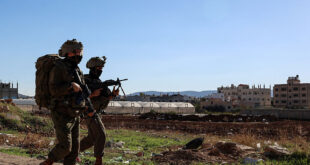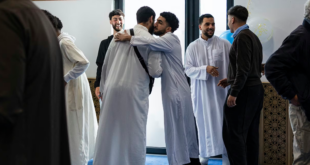Executive Summary
This report examines Iran’s strategic posture in the South Caucasus following Deputy Foreign Minister Saeed Khatibzadeh’s remarks at the Yerevan Dialogue 2025 forum.
Highlighting Tehran’s stance on regional stability, his address stressed the importance of an Armenian-Azerbaijani peace agreement and the Armenia-Iran corridor’s geopolitical significance.
The analysis provides insight into Tehran’s red lines concerning territorial integrity and its broader strategic objectives across the Eurasian landscape.
Key Takeaways
The potential establishment of the so-called Zangezur Corridor through Armenian territory by Azerbaijan is perceived as detrimental to the strategic interests of both Iran and the Gulf states.
Armenia serves as Iran’s gateway to the Eurasian Economic Union (EAEU), enhancing Tehran’s access to regional markets.
As a landlocked state, Yerevan relies on Tehran for access to the Persian Gulf and international waters, providing a vital supply corridor in light of its closed borders with Turkey and Azerbaijan.
Armenia’s proposed “Crossroads of Peace” initiative has drawn the interest of several Gulf countries, which view the route, via Iran and Armenia, as a potential land bridge to the Black Sea.Information Background
Khatibzadeh underscored the strategic importance of Iran’s relationship with neighbouring Armenia, emphasising its historical and geopolitical significance. At the Yerevan Dialogue 2025, he noted that, over the millennia, Tehran has relied on two primary corridors for connectivity. The first was the East–West route, later referred to as a “sea-through” corridor, comprising two sub-routes: one leading to Baghdad and the other to Anatolia and the South Caucasus. The second was the historic Spice Route, linking Asia and Europe via Iranian territory. He also highlighted the modern revival of the North–South Corridor, stretching from India to Iran’s Persian Gulf port of Bandar Abbas and further into Central Asia and Russia.
In the context of Armenian Prime Minister Nikol Pashinyan’s presentation of the Crossroads of Peace regional connectivity initiative, Khatibzadeh remarked that this project has the potential to link the Black Sea and the Gulf region through Armenia and Iran. He asserted that, within the broader regional connectivity framework, Armenia, Azerbaijan, and Georgia play critical roles.
However, the Deputy Minister raised a rhetorical question concerning why these significant potentials have not been realised. He attributed this stagnation to ongoing geopolitical rivalry, both internal and external, which he argued has harmed the region as a whole, including actors not directly involved in the disputes.
Khatibzadeh reiterated Tehran’s long-standing position that any initiative resulting in a change to the region’s geopolitical map is unacceptable. He emphasised that all connectivity efforts must respect existing territorial arrangements and refrain from altering sovereignty, specifically referencing the so-called “Zangezur Corridor” advocated by Azerbaijan.
Expanding on this point, he expressed concern over issues of sovereignty and legal jurisdiction, stressing the necessity for all regional developments to adhere to international law. In fact, although Iran supported Azerbaijan’s claim to Nagorno-Karabakh/Artsakh, based on Soviet-era maps and international legal principles, the same legal framework requires that the sovereign territory of Armenia remain under Yerevan’s control.
During the Yerevan Dialogue, Khatibzadeh intentionally addressed this issue to Armen Grigoryan, Secretary of Armenia’s Security Council, seeking explicit confirmation that no proposed corridor would undermine Armenia’s sovereign jurisdiction.
Geopolitical Scenario
As articulated by Khatibzadeh, many Iranian initiatives and strategic projects have fallen victim to the ongoing geopolitical rivalries, particularly between Baku and Yerevan, as well as between Baku and Stepanakert. Consequently, Tehran views peace not as a strategic choice, but as an imperative to achieve its regional objectives.
In its efforts to resolve tensions between Yerevan and Baku, Tehran has supported the diversification of regional connectivity and transportation corridors, alongside endorsing the peace agreement that Armenia has expressed readiness to sign with Azerbaijan. In particular, to address the contentious issue of linking mainland Azerbaijan with its Nakhchivan exclave, without resorting to military force or infringing upon Armenia’s Syunik province, Tehran proposed and developed the Araz Corridor in cooperation with Baku. This route traverses Iranian territory and offers an alternative to the Zangezur Corridor.
However, Azerbaijan has introduced several controversial preconditions to the peace process. One such demand was the dissolution of the OSCE Minsk Group. As Armenian Prime Minister Nikol Pashinyan noted during his presentation, this demand becomes even more concerning in light of Baku’s increasing references to approximately 60% of Armenia’s internationally recognised territory as “Western Azerbaijan”, including hosting conferences with the symbolic granting of honorary membership in the Western Azerbaijan Community to academics and politicians promoting this concept. These actions raise serious questions about Baku’s intentions and the viability of future negotiations.
Recent remarks by U.S. Senator Marco Rubio, highlighting efforts by the current U.S. administration to prevent a potential Azerbaijani invasion of Armenia, further validate the concerns regarding the risks of escalation.
Against this backdrop, Khatibzadeh emphasised the immutable geographic reality of Iran’s connection to Armenia, citing geoeconomic, geostrategic, and geocultural considerations. He stressed that the region requires connectivity and inclusivity rather than disruption and rivalry. This reflects Tehran’s broader foreign policy orientation, which is grounded in regionalism, interconnectivity, and good-neighbourly relations.
For Iran, Armenia represents the only member state of the Eurasian Economic Union (EAEU) with which it shares a direct land border. This translates into access to a domestic market of 3 million and a potential gateway to 200 million consumers within the EAEU. To maximise the potential of this economic link, Tehran opened a trade centre in Yerevan. For landlocked Armenia, Iran has consistently served as a crucial conduit to the Persian Gulf. Moreover, the Islamic Republic is uniquely positioned as the only country that physically connects the Persian Gulf to the Caspian Sea, two regions that together account for nearly 70% of the world’s conventional oil and gas reserves. With Armenia’s borders with Turkey and Azerbaijan effectively closed, Tehran has become Yerevan’s vital logistical and supply corridor.
According to Khatibzadeh, this connectivity enables Iran to offer economically viable and self-sustaining routes, not only to Armenia but to other regional actors as well. In this context, the Crossroads of Peace initiative has garnered the interest of several Gulf countries, which view the Yerevan-Tehran axis as a viable route for accessing both Russia and the Black Sea.
The recent first joint military exercises conducted by Armenia and Iran along the Norduz–Agarak border crossing, previously secured by personnel from the Russian Federal Security Service (FSB), highlighted the two countries’ shared commitment to safeguarding this vital transit corridor. The drills underscored the strategic importance both sides attach to the stability and security of their direct border link.
In parallel, joint military exercises between Tehran and Baku were also held, with the stated aim of enhancing mutual trust, as emphasised by the Azerbaijani Ministry of Defence.
Conclusion
Iran’s evolving posture in the South Caucasus reflects a strategic recalibration driven by geography, energy corridors, and regional stability imperatives. Tehran views the preservation of Armenia’s territorial integrity and the prevention of externally imposed geopolitical shifts, such as the establishment of the so-called Zangezur Corridor, as critical to maintaining the current regional order. The intensification of Iranian-Armenian diplomatic and security cooperation, alongside Tehran’s parallel engagement with Baku, illustrates the Islamic Republic’s attempt to balance competing interests while safeguarding its own strategic corridors.
By promoting inclusive regional connectivity projects, notably through support for the Armenian-proposed Crossroads of Peace and the development of the Iran-based Araz Corridor, the Islamic Republic is positioning itself as a key geoeconomic hub linking the Persian Gulf to the Black Sea and beyond. At the same time, Tehran’s rhetoric and actions underscore its red lines regarding any unilateral territorial or political rearrangements.
Moreover, against the backdrop of increasing U.S. engagement in the region, following the signing of a strategic partnership agreement between Yerevan and Washington under the Biden administration, Ali Akbar Ahmadian, Secretary of Iran’s Supreme National Security Council (SNSC), stated that Tehran will not allow any foreign influence to undermine its strategic partnership with Armenia.
In this complex and competitive geopolitical landscape, Iran’s emphasis on legality, sovereignty, and regional dialogue signals a preference for structured engagement over destabilising rivalry.
 Eurasia Press & News
Eurasia Press & News



